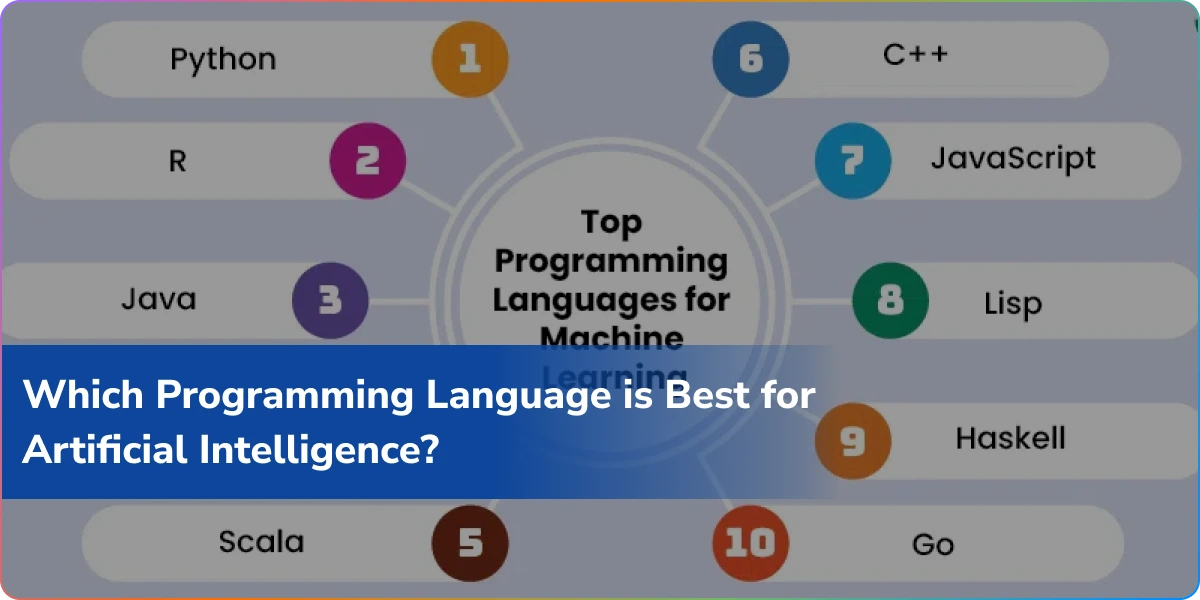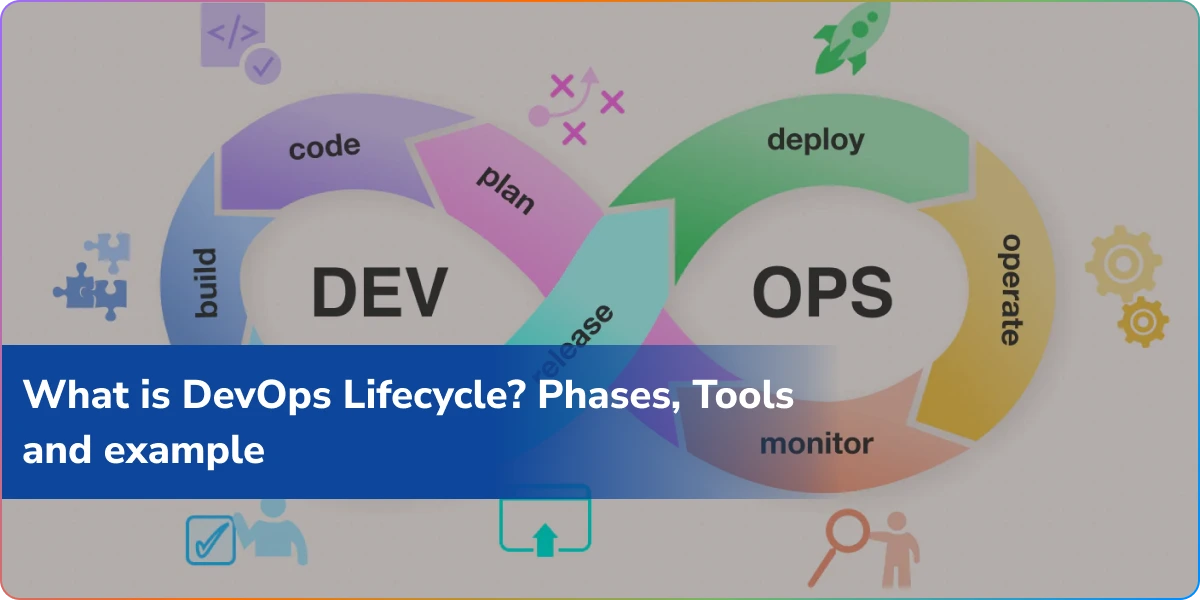Starting from voice assistants like Alexa and ending with predictive analytics, self-driving cars, and smart chatbots, AI is the foundation of modern technology. Behind every AI innovation is one crucial decision: choosing the right programming language.
Which programming language is used for Artificial Intelligence? Why is it appropriate to build intelligent agents, algorithms, and AI-based systems?
In this comprehensive blog, we will learn not only the best programming languages for AI, but also the characteristics of intelligent agent, types of agents in artificial intelligence, and structure of intelligent agent in AI-everything you need to learn about how AI systems are developed from scratch.
Understanding Artificial Intelligence and Intelligent Agents
Let’s begin with the basics: what powers AI and how it works, before jumping into languages.
An AI intelligent agent refers to a self-contained entity whose actions are aimed at the achievement of some set goals-sensing its environment, acting, and reasoning over data. The intelligent agents are the building blocks for most of the AI systems-from autonomous vehicles to recommendation systems.
Characteristics of Intelligent Agent
To understand how intelligent behavior for AI systems is achieved, let us consider the principal characteristics of intelligent agent
Autonomy: Works independently without human control.
Reactivity: It responds to environmental changes in real time.
Proactive: It acts on its own to accomplish goals, not in response.
Adaptability: Emphasizes learning from past experience in making better decisions in the future.
Goal-directed Behavior: Behaves for the achievement of a certain goal.
These features outline how an intelligent system acts in dynamic and risky environments.
Types of Artificial Intelligence Agents
There can be a great diversity of complexity and purpose in AI agents. The knowledge of the different types of agents in Artificial Intelligence will definitely help you in programming and selecting the appropriate programming language and architecture for your venture in AI.
Following are the major types of agents in artificial intelligence:
Simple Reflex Agents:
These agents are motivated by the immediate environment state. They operate on a condition-action basis, for example, “if red, then stop.”
Example: A simple traffic light control system or thermostat.
Model-Based Reflex Agents:
They contain an implicit model of the world-a model that allows them to make decisions based on current and past sensory inputs.
Example: A chatbot with memories of past conversations.
Goal-Based Agents:
These agents not only respond but also make decisions based on which actions bring them closer to attaining certain goals.
Example: A GPS system that selects the shortest path to a destination.
Utility-Based Agents:
These agents choose actions through utility maximization. They weigh several goals against one another to pull out the best outcome.
Example: Algorithms that trade stocks to maximize profit while keeping losses low.
They can learn from experiences and improve performances over time, enabled by techniques such as machine learning.
Learning Agents:
They can learn from experiences and improve performance over time, using techniques such as machine learning.
Example: Self-driving cars capable of learning with driving information.
All kinds of agents are designed for different tasks in AI, and the programming language used might have an influence on the efficiency with which these agents work.
Structure of Agents in Artificial Intelligence
Every intelligent system has an internal structure that determines the ways in which it senses, reasons, and acts. The structure of agents in artificial intelligence may be categorized into four major constituents:
Sensors: Receive information from the environment.
Actuators: Perform actions based on decisions.
Perception Unit: Translates information gathered through sensors.
Decision-Making Unit (Brain): Chooses the best action regarding the goal and the environment.
In other words, the intelligent agent structure of AI can be described as:
Agent = Architecture + Program
It is the physical or software basis, such as a robot, web service, or algorithm.
The program is the rules governing how the agent acts and decides.
In an autonomous vehicle, for example, sensors perceive signs on the road, the AI program decides on when it should stop or speed up, and actuators perform the driving action.
Which Programming Language is used for Artificial Intelligence?
With the simple understanding of agents, let’s move to the very fundamental question: which programming language is used for Artificial Intelligence programming?
Languages used in AI systems have to provide support for sophisticated algorithms, efficient computation, and easy integration with machine learning libraries. Here are the top players:
1.Python: The King of AI Programming
The most preferable answer whenever one asks about which programming language is applied to Artificial Intelligence is Python.
Why Python is the best for AI:
Ease of Use: Minimum syntax, almost like human language.
Large Libraries: Development is made easy by libraries like TensorFlow, PyTorch, Scikit-learn, and NumPy.
Community Support: Enormous community that is continually creating tools and resources.
Versatility: It works well with data analysis, deep learning, NLP, and computer vision.
Example: Constructing a smart agent in AI, such as that of a voice assistant or recommendation system, is easier in Python due to its AI-friendly environment.
2. Java: Confiável e escalável
The most in use language in AI is Java, due to its stability, scalability, and performance.
Why use Java in AI?
Portability: Works across multiple platforms.
Strong performance for memory management in large systems,
Integration Power: It easily integrates with enterprise systems and big data technologies, such as Hadoop.
Example: AI chatbots, enterprise-level recommendation systems, and robotic systems often use Java
3. R: Best for Statistical Analysis and Machine Learning
Developers use R for statistical computing and data analysis, which are the vital components of AI development.
Advantages of R:
Powerful data visualizations: with libraries like ggplot2 and caret, it is easy to visualize and interpret data.
Machine Learning Ready: Perfect for model training, testing, and evaluation.
Example: predictive modeling, fraud detection, and health data analytics.
4. C++: High-Performance AI Applications
When we want a fusion of speed and real-time performance, C++ is outstanding.
Why C++ in AI?
Fast Execution: Great for heavy computational tasks.
Hardware-level access: It is ideal for robotics, gaming, and embedded AI systems.
This would be an example: C++ is used in Game AI, autonomous drones, and real-time computer vision for making quick decisions.
5. Lisp: The Original AI Language
The first language developed for AI research was Lisp, which dates back to the 1950s.
Why Lisp is still relevant:
Symbolic Processing: It is great for symbolic reasoning.
Dynamic Typing: It easily adapts to changing environments.
Example: Early expert systems and natural language processing applications.
6.Prolog: Logic-Based AI Development
Prolog stands for Programming in Logic. It emphasizes rule-based and logical reasoning.
Why Prolog works for AI:
Efficient Problem Solving: Ideal for AI systems based on logical relationships.
Declarative by Nature: A developer focuses on “what” to solve and not “how.”
Example: Used in natural language understanding, theorem proving, and knowledge-based systems.
7. Julia: The Future of High-Performance AI
Julia is drawing attention for scientific computing and numerical analysis.
Why Julia for AI:
High Performance: Similar to C++, with Python-like syntax.
Parallel Computing: Perfect for complex AI models and data-intensive computations.
Examples of this include AI simulations, deep learning models, and data analytics in research settings.
Choosing the Best Programming Language for Your AI Project
It depends on the project’s goals, the structure of agent in AI, and the computational needs.
Here’s a quick rundown:
Use Case Best Language
Machine Learning /Deep Learning Python
Enterprise AI Systems: Java
Statistical AI Models R
Real-Time AI Systems C++
Logic-Based Reasoning Prolog
Experimental / Symbolic AI <Long>
High-Performance Lisp
Simulations Julia
While Python is the most popular, other languages have shown strengths in certain niches in the development of Artificial Intelligence.
AI Language and Agent Design: The Connection
In AI, the selected language used while developing an intelligent agent has a great bearing on the effectiveness of perception, decision-making, and acting by the system.
For instance,
Python is considered ideal for learning agents as it can easily interface well with machine learning algorithms.
C++ is ideal for model-based reflex agents where real-time performance is important.
Prolog is suited for goal-directed agents that use logical reasoning.
The structure of agent in AI is realized differently in each language according to its design philosophy: procedural, object-oriented, or declarative.
Future of Programming in Artificial Intelligence
In the future, AI programming is going to be automated, integrated with the cloud, and done on low-code AI platforms. Today, developers use different languages in a combination of ways; for example, Python to drive AI algorithms, C++ to optimize performance, and JavaScript to provide web interfaces driven by AI.
Given that AI is continuously under development, understanding the structure of intelligent agents in AI and types of agents in Artificial Intelligence will make all the difference when developing even smarter self-learning systems that may soon be able to think and act like human beings.
Conclusion
So, which is the best programming language for AI? Although several languages can be used, Python leads the race in these regards, due to its simplicity, huge library support, and flexibility for all AI domains. However, which one to use depends on your project goals, the structure of agent in AI, and what kind of agents in AI you need.
Logixbuilt Solutions crafts intelligent data-driven applications powered by advanced AI technologies. From designing the structure of intelligent agents in AI to deploying advanced machine learning models, our team transforms your ideas into intelligent and high-performance systems.
FAQ’s
1. In which programming language is Artificial Intelligence implemented?
However, Python is considered the most popular language in AI because of its simplicity and vast libraries like TensorFlow and PyTorch. Other options besides Python are Java, R, and C++.
2. What are the characteristics of intelligent agent in ai?
The key characteristics of intelligent agent are its autonomy, adaptability, reactivity, proactiveness, and goal-oriented behavior.
3. What are the main types of agents in AI?
The types of agents in Artificial Intelligence are: Simple Reflex, Model-Based, Goal-Based, Utility-Based, and Learning Agents.
4. What is the structure of intelligent agent in ai?
The main elements of any structure of agents in artificial intelligence include sensors, actuators, a perception unit, and a decision-making unit; these make the core of AI behavior.
5. How does programming language impact AI agents?
The form of Agent in AI is shaped by different languages. Python fits learning agents, C++ fits real-time systems, and Prolog works for logic-based AI.


